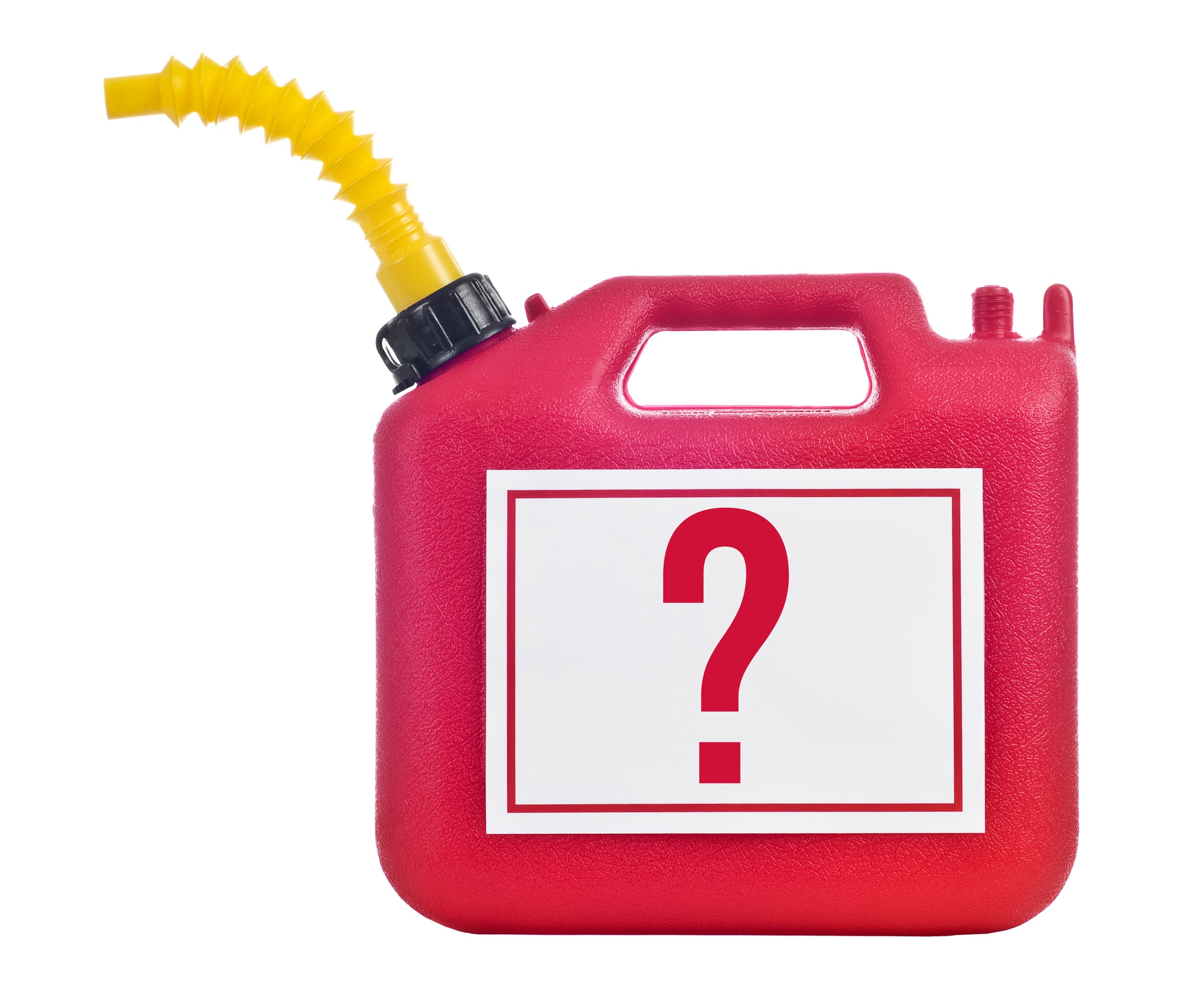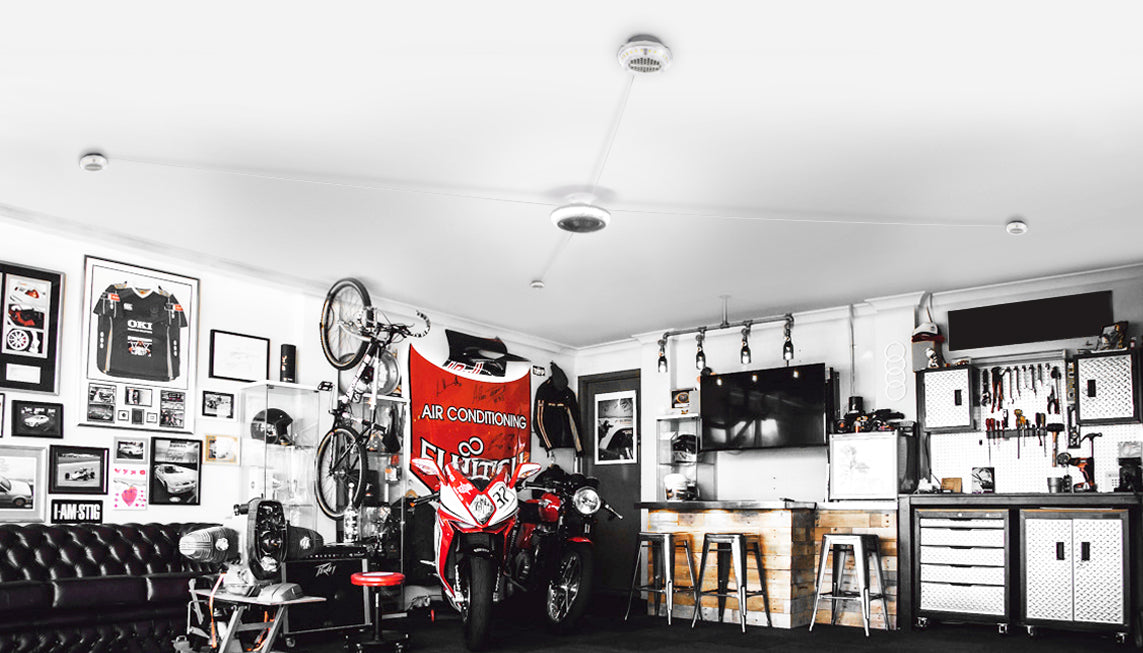
Who Makes an Easy Pour Gas Can and Spout That Works? | EZ Utility Jug
Pouring fuel into an engine should be easy, right? Unfortunately, most spill-proof spouts are neither spill-proof nor easy. So who makes an easy pour gas can that works?
It is important to note that although this article discusses CARB laws and gas cans, it also discusses different utility jugs that may not be approved for fuel in comparison. Some of the jugs discussed are NOT CARB approved jugs. Some jugs discussed may only be approved to be used in closed course racing, or on private property. Some jugs discussed are only designed to contain or transport oils, non potable water, or other liquids. Not all jugs discussed may be legal to use as a gas can or transport fuels in your state. Please check your own state law for the legal requirements pertaining to the use of utility jugs and gas cans.
That being said, if you have ever wondered how we got to the point where we need an easy pour spout to replace the "spill-proof" spouts that cause you to spill more gas, you have come to the right place.
Why Do We Need Easy Pour Spouts?
How did we get into this mess where pouring gas can be so frustrating? Our tale of woe begins in California. To prevent spills from gas cans, the California Air Resources Board (CARB) banned the sale of cans in California that would spill when tipped over. Retailers could only sell cans that would not spill when they tipped over.
Now the rest of the country could have just let California be California. Manufacturers, however, were unsure of how to proceed. They could either sell two cans, one for California, and one for the rest of the country, or completely switch all their cans to the way CARB wanted. However, ignoring California meant losing sales to the largest economy in the United States.
Also, by 2007, consumers were beginning to shop more online. Amazon was over a decade old. So who would monitor that someone in the Golden State from buying a can online? To clear up the confusion, the EPA adopted the CARB regulations in 2009.
What Did the CARB Regulations Require?
The CARB regulations had two separate goals. One was to reduce the amount of gasoline being accidentally spilled. The second was to increase child safety.
According to some estimates, 70,000 gallons of fuel were spilled annually from gas cans out of an estimated 3.25 billion gallons of gas poured into lawnmowers and similar equipment. Even if we treat these numbers as accurate (instead of wondering who estimated them and how), the percentage of gas spilled by cans is around 0.000021%.
To reduce spillage, the following for PFCs (portable fuel containers) were put into place:
- Automatic closure. The nozzles need to close automatically when a person stops pouring. This sounds like a good idea, but in practice, it forces the user to pour from an unnatural pouring position.
- Single opening. Cans could only have a single opening for both filling and pouring. This requires air and liquid to travel through the nozzle at the same time. This is not a recipe for a smooth flow of liquid.
- Limited emissions. The container can’t emit more than 0.3 grams of hydrocarbons.
The limited emissions standard did not affect the pouring process of cans, but the other two created cans that don’t pour well. We can’t imagine that the amount of gas spilled has been reduced.
What Were These Rules Supposed to Prevent?
These rules were supposed to prevent two problems. The first was excess spilling of gasoline and other fuels if a can gets knocked over. So spouts that would not pour any gas until a person pushing a lever or trigger were required. Also, to slow the spilling of gas and eliminate more than one opening in the container, the containers could no longer have a seperate vent on the top of the can.
Also, these spouts were designed to keep little kids safe. Child-resistant closures were mandated in 2008 by the Children's Gasoline Burn Prevention Act. It required that gas cans have closures resistant to kids under five while still being accessible “by senior-aged adults.”
These actions were well-intentioned. No one wants gasoline to cause harm to any person, or the environment. Protecting children is especially important, and they should not have access to gasoline, which does happen. (From 1999-2011, according to the Consumer Product Safety Commission, over 6,000 kids ingested gasoline.)
Did the Law Work the Way It Was Supposed To?
The results are mixed, however. Even after the CARB rules, kids under five are still accidentally drinking gasoline. According to the 2018 National Poison Data System, the majority of the 14,000 cases of gas exposure are for kids under 5, who are often drinking gasoline stored in drinking containers. If that is the case, then we might find better results further educating people NOT to put gasoline in drinking containers rather than making gas cans unusable for their intended purpose.
Additionally, many people report that they spill more, not less gas when fueling with CARB cans. Read some online forums, and you will see plenty of complaints about how much more gas and fuel gets spilled from the new, CARB cans. Since the pour spout must both suck in air and pour out fuel at the same time, the liquid doesn't flow smoothly but rather in fits and spurts. Plus, you practically need 3 hands to use them and a lot of patience and strength to hold a heavy gas can for the amount of time required to empty a CARB approved can.
What About Utility Jugs?
Although they may not be approved for fuels in some states, many people use basic utility jugs for fuels because they are simply less frustrating to use when compared to the CARB approved cans. They are made from the proper materials to hold fuels, and they do flow easier and faster. They are also far less complicated to use. However, it should be noted that although the CARB rules are frustrating, and maybe the intended solutions were missed, it is important to not spill fuel.

Some Utility Jugs do spill fluids while filling. This is mainly due to poor design and use of materials. The vents are often placed right at the spout, so when you are filling you are spilling. They also don’t offer replaceable gaskets, or in some cases, no gaskets at all. Some don’t even offer caps to their spouts, or simply using plumbing materials as spouts. Some seem as though the breather and the act of pouring was an afterthought or not specifically designed for the tasks they were being used for. Many don’t seal up well or transport well.
Despite the issues these poor designs are popular over CARB cans due to ease of use, and fast flow. Unfortunately they don’t even try to address the real problem of spills, proper sealing, and safe transport.
One utility jug on the market seems to have taken these concerns into their design plan and created a useful utility jug called the EZ Utility Jug by Risk Racing. Although the EZ Utility Jug is NOT a CARB approved gas can, nor marketed to carry fuel, its ability to easily pour liquids and prevent spills makes it one of the best utility jugs on the market for your general liquid needs.
How Can You Get Liquid to Pour Smoothly?
Getting liquids to pour smoothly and decrease spillage requires several design modifications that are not achievable with CARB restrictions. That is why CARB gas cans flow so slowly and “glug”. It may not be the fault of the gas can designer or the gas can brand. It is simply physics of how fluids flow and need a proper vent or it creates a vacuum. So if we remove the CARB restrictions from this conversation, it is easy to make liquid pour smoothly.
We will use what may be the best utility jug on the market as an example of how to design a jug to properly flow liquids (not necessarily fuel). Although the EZ Utility Jug is simply a utility jug that does not make claims about fuel, it incorporates some unique design features for containing transporting, and pouring liquids. In fact, the EZ3 and EZ5 Utility Jugs were specifically designed with usability in mind to easily pour liquids with less spills.
Design of the jug
There are a lot of jug designs on the market. All of which mostly just copy each other, and rarely take usability into the form factor. For the EZ Jug, the designers took the “Form Follows Function Approach”. It solves many issues concerning handling and pouring fluids by using better design.
- Breather Design and Placement: One reason liquid spills while pouring from most utility jugs is simply from pour vent holes placement. The EZ Utility Jug’s vent is at the back of the top handle and mounted horizontally to prevent accidental spills while pouring.
Another reason people spill with utility jugs is a flow rate that is too fast for filling small tanks. This issue is solved on the EZ Jug with their fully adjustable aluminum breather screw. The breather on the EZ Jug is slotted and acts as a throttle to control the flow speed. It can be adjusted to flow a trickle of fluid, or open it wide up for quick flow into large tanks.
- Triple-handle design. Most utility jugs have one awkwardly placed handle. The EZ Jugs have three handles and they are specifically designed with the center of mass of the jug in mind. The EZ jugs are perfectly balanced for control while pouring. With the addition of a third fingertip handle at the front of the jug, the EZ Utility Jug ensures more control while you pour, even to the last drop. The placement and use of these three handles allows all users to pour with less effort and require less overall strength.
Design of the Hose
When you pour a liquid, you want a spout that is both flexible but predictable. The hose bender on the EZ Utility Jug has a set of features that make it an ideal easy pour spout:
- Hose Bender. The hose is stabilized by tethering the anodized aluminum cap to the base of the spout. This creates a bent spout that is stabilized and pre-bent making it easy to enter and exit whatever tank you are filling without spills. Hose clamps and a design that utilizes replaceable O-rings also prevents leaking when you pour or transport the EZ Utility jugs.
- Stability Hook. The end of the Hose Bender Spout features a stability hook to prevent your spout from entering the tank, or moving away from the tank while filling. This prevents spills and aids in the pouring process dramatically.
How to transport your jug
A lot of spills happen when the jug is being transported. This is because no jugs are designed with transport in mind...except for the EZ jugs. Most people rely on bungee cords, tie-down straps, rope, or simply nothing at all to transport their jugs. None of these are effective.
- EZ Jug Floor Mount. Designed to mount to your truck or trailer, both the EZ3 and the EZ5 jugs snap right into the transport mount. It is also lockable to prevent others from snagging your jug or using it. Locking it could also be a preventative measure from spills or a way to prevent children from accessing.
Bottom line: Although all of these design features prevent the pouring problems created by the 2009 CARB Regulations, and may solve other use issues, it is important to note that you should always follow your local or state guidelines for proper gasoline storage and transport.
Final Thoughts
The next time you see the language about what you can and cannot carry in a utility jug, you know why. The rules and regulations behind the CARB laws are well intentioned, and should be followed. There may be alternatives on the market, but they should be researched and only used when legal, such as closed course racing.
Among the utility jugs on the market, the EZ Jugs may be the best design available. They can legally be used to carry oil, water (non-drinking), animal feed, or other non-fuel storage purposes. They can possibly also be used to dispense fuel on closed course competition races or private property. Consult your own local and state laws.
The EZ Utility Jug does that better than any of its competitors. The design features of the Hose Bender provide for an easy to use pour spout for a more consistently accurate pour. The adjustable aluminum breather allows air to vent into the container. The cap, hose clamps, and universal compression fittings use chemical resistant rubber O-rings to ensure there will be no accidental leaks. They are also replaceable to ensure the jug stays leak resistant. The chemical resistant HDPE plastic body of the EZ jugs is transparent to allow the user to see fluid levels and help determine fluid type. Finally, the EZ Jug Floor Mount keeps the jug from tipping over or moving around while in transit.
Regardless of how you plan to use a utility jug, you want one that is easy to handle, durable, and has a spout that pours well without spilling whatever precious resource you have in the jug.
*IMPORTANT NOTE: EZ Jugs are NOT portable fuel containers as described by ASTM, EPA, CARB and other official agencies. NOT SOLD FOR OR TO BE USED AS A PORTABLE FUEL CONTAINER. Your use of utility jugs as fuel containers or gas cans may violate the law of your state. Please check your own state law for the legal requirements pertaining to the use of these utility jugs and gas cans. Intended uses include storage and transport of feed, water, attractants, fluids and other outdoor products. Additional uses include transport, storage, and proper disposal of automotive and construction fluids such as antifreeze, engine oil, gear oils, hydraulic fluid, and transmission fluid. NOT INTENDED FOR DRINKING WATER STORAGE


























Leave a comment
* Please note, comments need to be approved before they are published.